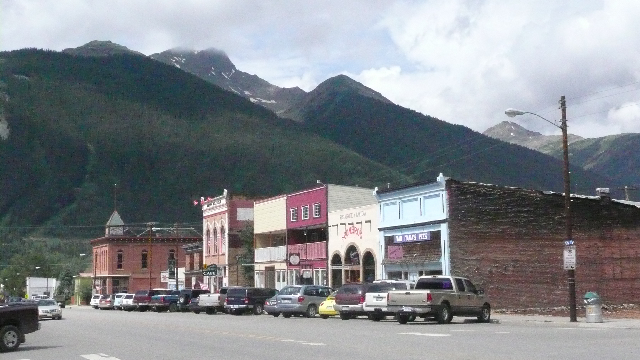|
Moderated by NW Okie! |
Volume 10 , Issue 312008Weekly eZine: (374 subscribers)Subscribe | Unsubscribe Using Desktop... |
History of Silverton, CO

Silverton, Colorado is known as the Treasure Chest of the San Juans! For more information on Silverton History you can visit www.silvertonhistoricsociety.org.
Silverton was "a gritty little mining town with victorian pretensions!" as one local might put it.
It was once a stomping ground of silver kings and railroad giants. Today it is considered on of Colorado's most endearing destinations as you travel the million dollar highway from Durango to Silverton.
Silverton district opened legally to miners in 1874, following the Brunot Treaty with the Utes when an estimated 2000 men moved into the region of that same. The men came from across the United States, parts of Europe and china to endure severe winters and dangerous mining conditions in their pursuit of the minerals they hoped would make them rich. They came on foot and astride mules.
In 1879, the wagon road over Stony Pass (12,590 feet) opened. Three years afterwards the railroad reached Silverton, coming north from Durango relieving Silverton's isolation. In 1884 Otto Mears operated his toll road between Silverton and Red Mountain town, and then on into Ouray. By 1887 the railroad had reached Ouray from the north, but it never connected to Silverton from the north due to the rugged Uncompahgre Canyon.
There were also "sturdy souls" who lived in Silverton and worked in the post office, sawmills, blacksmith shop, mercantile, newspaper, liquor stores, smelters and assay office. The town's population in 1876 was 500 and life was not easy for any of them.
Causes of death in early Silverton was from snowslides, miner's consumption, penumonia, influenza (1918 epidemic) and mine accidents.
The mining around Silverton reached its peak between 1900 and 1912 and the population of San Juan County peaked at 5000.
 According to the Silverton Colorado website, "The area boasted four railroads, three smelters, and over thirty mills serving myriad gold and silver mines high in the mountains. Men worked at these remote locations year-round, living in boarding houses, coming off the mountains via tram bucket over long cable tram lines designed to carry the ore from the mine to the mill several thousand feet below. On the rare occasions miners came to town, many of them spent their money in Blair Street?s saloons and houses of ill repute."
According to the Silverton Colorado website, "The area boasted four railroads, three smelters, and over thirty mills serving myriad gold and silver mines high in the mountains. Men worked at these remote locations year-round, living in boarding houses, coming off the mountains via tram bucket over long cable tram lines designed to carry the ore from the mine to the mill several thousand feet below. On the rare occasions miners came to town, many of them spent their money in Blair Street?s saloons and houses of ill repute."
Today Silverton's population of 500, is a tribute to the survival of a gritty, tough community for whom quitting was never an option. The entire town has been designated a National Historic Landmark. It is a favorite destination for train fans, history buffs, and outdoor enthusiasts. Silverton remains Silver Queen of Colorado, beloved by those who live there and those who come to visit.
| View or Add Comments (0 Comments)
| Receive
updates ( subscribers) |
Unsubscribe
| © . Linda Mcgill Wagner - began © 1999 Contact Me | |
